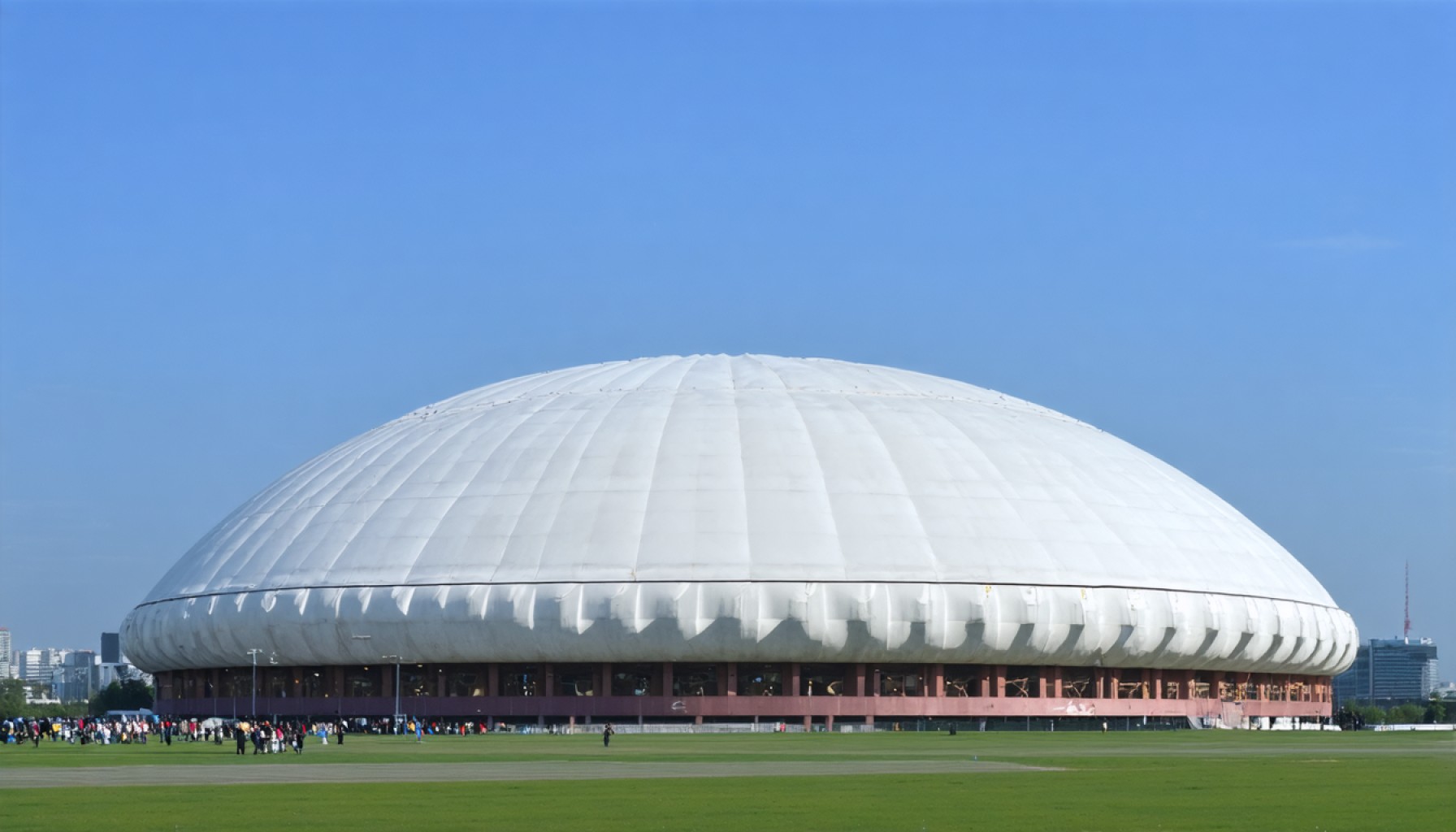- Sapporo Dome achieves profitability with a projected net income of 24 million yen after a two-year slump.
- A critical factor in the turnaround is an advertising revenue boost from Daiwa House’s naming rights deal, worth 250 million yen annually.
- The venue hosted 31 more event days compared to the previous year, including concerts and sports tournaments, enhancing its revenue stream.
- Previously hampered by a 651 million yen deficit due to the Fighters baseball team’s departure, the dome now showcases strategic adaptability.
- Projections for next year suggest a 40 million yen surplus, aided by pricing adjustments and diversified events.
- Sapporo Dome exemplifies resilience and innovation, proving large venues can thrive with strategic partnerships and foresight.
Bathed in the glow of vibrant events and a lucrative naming rights deal, Sapporo Dome has managed a remarkable turnaround this fiscal year, marking a return to profitability after a two-year slump. With a projected net income of 24 million yen, the iconic venue stands as a testament to strategic partnerships and revitalized entertainment offerings.
The dome’s financial revival is largely driven by an eight-month influx of advertising revenue from Daiwa House, which secured naming rights last July for an annual 250 million yen. This partnership sparked a reinvigoration of the space, seen through the surge of event days, from pulsating music concerts to bustling amateur sports tournaments—31 days more than the previous year.
Last year’s financial statement told a bleaker tale, with a daunting 651 million yen deficit as the dome grappled with the departure of the Fighters baseball team. Yet, this fiscal year, the venue orchestrated a symphony of strategy, balancing losses and gains while cultivating a more diverse array of events.
Looking ahead, projections for the next year are optimistic, with expectations of a 40 million yen surplus, bolstered by adjustments in pricing that promise to further stabilize the dome’s finances. The dome is crafting a new narrative, one that underscores resilience and adaptability in the face of adversity.
This financial phoenix stands poised not only as a hub of entertainment but as a beacon of recovery and innovation, signaling to the world that even the largest of venues can reshape their fortunes with a mix of ambition and strategic foresight.
Discover the Secrets Behind Sapporo Dome’s Triumph: How Strategic Moves Turned Deficits into Profits
How-To Steps & Life Hacks
Revitalizing Event Venues: Key Strategies
1. Secure Profitable Partnerships: Seek out naming rights deals with major corporations to generate steady revenue streams. For instance, Sapporo Dome’s agreement with Daiwa House transformed its financial outlook.
2. Diversify Event Offerings: Increase the range of hosted events to attract diverse audiences. Expanding beyond sports to include concerts and community events can fill more dates on the calendar.
3. Enhance Marketing Efforts: Utilize targeted marketing to reach potential audiences across different demographics, thereby maximizing attendance.
4. Optimize Pricing Structures: Adjust pricing for events and facilities to align with financial goals while remaining attractive to organizers and attendees.
Real-World Use Cases
Successful Venue Management
– Wembley Stadium, London: Known for hosting a mix of sports, concerts, and other events, it serves as a model example of diversification in venue management.
– Madison Square Garden, New York: Its strategic location and variety of events have maintained its status as one of the most profitable arenas globally.
Market Forecasts & Industry Trends
Future Prospects for Event Venues
The global event venue market is projected to continue growing, driven by an increasing number of live events post-pandemic. As virtual events decline, demand for physical spaces is expected to rise, pushing revenue growth in this sector.
Reviews & Comparisons
Venue Success Stories
– The O2 Arena: Its focus on world-class entertainment and adaptive uses secures high revenue and visitor numbers.
– Sapporo Dome vs. Tokyo Dome: While both venues adapt to post-pandemic challenges, Sapporo Dome’s aggressive diversification and strategic partnerships have set a new benchmark for overcoming financial downturns.
Controversies & Limitations
Risks and Challenges
– Market Saturation: A proliferation of venues can lead to competition, requiring strategic differentiation.
– Operational Costs: Maintenance and operational expenses can eat into profits if not carefully managed.
Features, Specs & Pricing
Venue Offerings
Sapporo Dome features a retractable surface and seating that adjusts for various event types. Pricing is competitive and dynamically adjusted to reflect event popularity and operational costs.
Security & Sustainability
Eco-Friendly Developments
Investing in sustainable practices, like energy-efficient lighting and waste reduction initiatives, can cut long-term costs and appeal to environmentally conscious patrons.
Insights & Predictions
Sapporo Dome’s Future
Experts predict the venue’s profitability will grow as it leverages its strategic location and diverse offerings to attract an international crowd post-pandemic.
Tutorials & Compatibility
Maximizing Venue Use
– How to Plan Multi-Purpose Events: Training venue staff to handle different types of events ensures adaptability in scheduling and operations.
– Leveraging Technology: Using software for event booking and analytics can streamline operations and identify trends.
Pros & Cons Overview
Advantages
– Increased Revenue Streams: Name rights and diversified events increase profitability.
– Adaptability: Ability to host various types of events boosts utilization.
Disadvantages
– High Initial Costs: Investments in renovations and marketing can be substantial.
Actionable Recommendations
– Seize Innovative Partnerships: Look for sponsorship and naming rights deals to create reliable income sources.
– Expand Event Platforms: Broaden the scope of events offered to draw in varied audiences and stakeholders.
For further reading, explore Forbes for more insights into business strategies and market trends.
The financial strategies employed by Sapporo Dome highlight the necessity of innovation and adaptability in today’s event management industry, serving as a valuable case study for other venues seeking to transform their economic outlook.
